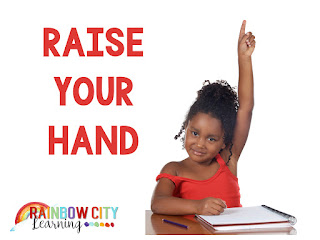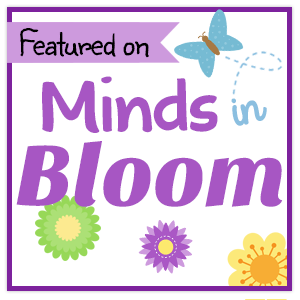Raising my hand over here to share another story about how my teaching past has collided once again with current events! Every time one of these collisions occurs, I get to take a sweet trip down memory lane. I hope you will enjoy going there with me today! I was a brownie scout and later a girl scout. I loved everything about scouting. Well, almost everything. Anyone who has ever known me will tell you that I am not a fan of camping out. This girl has always preferred a crackling indoor (preferably artificial) fire and a good book to a night spent under the stars. Some things like that are true for each of us. It's what makes each of us special and interesting, in my opinion. I loved working on and earning badges to wear proudly on my sash. As a grown up mom and teacher, I found time to be the leader of my daughter's brownie troop, and enjoyed working on all the badges with the girls. Even the cookie sales were fun!
A few days ago, I read a news story about Alice Tapper, a ten year old girl scout from New York (daughter of Jake Tapper of the New York Times). Alice, it seems, had gone on a field trip with her class and noticed how interactive her male classmates were in all the discussion and observations while the girls just sort of hung back and listened. (A teacher nightmare, right?) Alice thought of creating a "Raise Your Hand" badge, encouraging girls to be bold and brave in class discussions, and also to encourage at least three other girls to do the same. Raising my hand to congratulate Alice for a phenomenal idea. Her badge is now a part of what Girls Scouts do!
Also hanging my head in sadness that this is even still an issue. Seriously, teachers, I thought we had long since conquered the classroom demon of having only boys recognized for their efforts, expertise, and ideas. I remember using a grocery store clicker in my hand during my first few years as a teacher to count how many times I called on girls, a way to keep this issue in the forefront of my budding teacher's mind just about the time when the two Steves were playing around with the idea of personal computers in that long ago and far away garage. I remember reminding myself mid-career, to call on a girl and then a boy, then a girl, and then a boy, just to keep the playing field somewhat even. By the time I was nearing the end of my career, my principal accused me of calling on a little girl named Ellie sixteen times during his observation! Sixteen!!??!! Really??!! I didn't know whether to jump out of my chair with raised fist, shouting, "Yes! Girl Power! Girls Rock! Ellie Rules!" or to show him my own data, quietly collected on a spreadsheet in my lap, which proved that I was recognizing both genders equally. I chose the latter. (I know that a few of you who really know me might be surprised at my choice, but my evaluation for some now unknown reason was still super important to me.) Sigh.
As a currently retired teacher and teacher-author, news of this still needed attention to drawing girls from the silent shadows to the front of the class has given me many resource ideas to help you to encourage students to speak up in class. As I searched existing "Raise Your Hand" resources, I noticed that all so far are about being polite and waiting your turn to speak. "Raise your hand and wait to be called on." I have created something to encourage all students (boys and girls), regular ed as well as special ed to speak up in class. For many boys as well as girls, developing confidence in expressing your own opinions and knowledge base is hard and needs modeling, examples, and practice. My "Raise Your Hand" resource includes posters, a SCOOT game (task cards with directions), and a journal targeted toward encouraging kids to speak up and speak out about what is important.
Click here for your free sample poster:
The learning environment
Do your students feel safe, valued, and appreciated in your classroom? Kids are more likely to raise their hands to volunteer thoughts or answers when they feel that they are in a safe and accepting environment. What do your students think your position is on talking? If a stone silent classroom is what they think makes you happiest, they are less likely to want to spoil that mood by speaking out. I think you might be surprised at how many students actually think that they are pleasing the teacher by never speaking. Never. Including during discussion time.
I know because I was that student. I was rewarded for being quiet. Over and over. I thought that being quiet in school was my superpower, and I cultivated it to the tune of tuning out into my own little world, thinking about whatever book I was currently reading rather than tuning in to the lessons. I have known students like that along the way on my teaching journey. I'm only suggesting that we be careful about what and how we praise. It may not be received in the way it was intended.
Individual needs and comfort level
How well do you know your students? Some people naturally are outgoing and some are naturally more introverted. Neither is right or wrong. Just different. Consider seating position in the room, proximity to friends to increase the comfort level, and different ways of asking for responses. As a teacher with special ed inclusion, you may want to provide partial answers ahead of time to paras or to the kids themselves.
Wait time is super important in getting responses from more reluctant participants. This is one of the hardest things to do as a teacher. How exciting it is to keep the momentum going during a lesson when the hands fly up and you get many answers in rapid succession! And how seemingly endless it is to wait. Waiting was always one of the hardest things for me, but I was always amazed at who would raise their hand and say something if I would only wait just a little longer before speaking again myself or calling on someone else.
Try this: Call on a reluctant participant and wait. If the child responds, "I don't know.", just say, "What would you say if you DID know?" You will be blown away! I was, every time I tried this! Sometimes the most wonderful responses are lurking just below the surface of someone's discomfort and reluctance. Please try it and come back and tell me a story in the comments of how it went! Please!
Modes of Response
Do your students have different ways that they can show what they know? We loved using individual white boards and erasable markers (or erasable crayons) to respond sometimes. You can make a really inexpensive version of this low tech device by just laminating a piece of white cardstock for each student. Mine kept theirs in a gallon ziplock bag with an old sock for erasing and a marker. This little answer kit was readily available in each desk to be used when we were choosing to respond that way.
For high tech response modes, try Socrative and just google "online response systems for class". There are many options out there.
Many of us use music for specific lessons and transitions, but have you ever tried to use a short musical interlude as an aspect of wait time? It makes your lesson atmosphere feel more like a game show, and some may relax when they hear the music. I recommend designating one particular sound clip as your wait time music.
Could your students whisper the answer to their seating neighbor and when you call on a student, he or she gives you his/her neighbor's response? Try this also with small groups. Let a few students talk it over and then call on one member to report out on the group's response.
Sociograms
Another technique as old as education time. Ask your children at the end of each week who they would prefer to be seated with. Make it a written and confidential response. The data that you can collect on cliques and possible isolates will be invaluable as you move closer and closer to an all inclusive, welcoming, and safe classroom.
Bag of Tricks
The Magic Mike (as in microphone!)
I used to call this my Phil Donahue lesson. (Magic Mike is more fun! Just think it to yourself!) Long before Ellen and Queen Latifah, even long before Oprah, there was a talk show led by Phil Donahue. One of Phil's favorite phrases was, "Help me out here!" and he would travel into the audience with his microphone, holding it in front of various audience members. With a mike held in front of their face, people would say something pertaining to the discussion whether they had intended to say something or not.
The first time I tried this idea, I used my chalk holder (who remembers those?) and held it in front of one child who didn't usually volunteer to answer. Wow! Got an immediate response! (Kind of like asking, "Well, what would you say if you DID know the answer?" Promise you'll love what you hear!) Try passing the mike among your kids. Let them pass the mike after answering. People love microphones. Why do you think Karaoke is so popular? Not just for extroverts!
The Koosh Ball
Put me in, coach! I've got somethin' to say!
Toss one into the crowd, and watch kids reach for it whether they are ready to answer or not! You can really use any soft (key word is soft) ball for this one. Toss a ball and people will naturally reach out to catch it. If they don't reach right away, you will catch them laughing when you throw it. Fumble it a little when they throw it back after answering, then make a smooth and perfect catch. Insert smiles here!
Video Inspiration
You might want to consider using one of these two song videos either to inspire your kids to raise their hands, or just for a chuckle and a little inspiration for yourself. The Sesame Street one is of course about waiting for the correct time to speak by raising your hand. The old Eddie Floyd Concert video sends an age old message: "Baby I'm here." Talk to me. Talk to me - trust me. Isn't that what we all really want our students to hear when we ask a question?
Sesame Street - Raise it Up
Eddie Floyd - Raise Your Hand
Janis Joplin's version
There are all kinds of love in this world. I hope some small part of this post helps you to spread a little teacher love, a little acceptance love among your students. And if your actions help a girl scout to earn a "Raise Your Hand" badge, all the better!
For more talk about teaching in November, be sure to visit these awesome Teacher Talk blogs:



























Thanks for bringing to light and talking about this incredibly important topic!
ReplyDeleteI really like your advice on reluctant learners. And wait time is so important for learners! Thank you for sharing this valuable post!
ReplyDeleteI am in LOVE with this post! I'm thinking about your message here and how it applies to us as teachers. Maybe it's that I'm getting older, but as a teacher, I'm raising my hand more and more and demanding to be heard! The older I get, the more I realize our voices are important...STUDENTS & TEACHERS! P.S. My heart swoons that you added Janis Joplin's rendition! Peace out!
ReplyDeleteI LOVE this post, Retta!! I was a Girl Scout leader for 16 years and I have loved seeing the amazing women those girls have become: confident, creative, successful. All your ideas are fabulous; love the magic mike and koosh ball! I wish I had been a student in your class!
ReplyDeleteI really enjoyed this post. The badge is an excellent idea.
ReplyDeleteAs always, your wonderful posts are so right on. It's sad that the most vocal kids are the ones who get noticed and the quiet ones just sit there. So important to call on everyone. By the way, I loved being a girl scout myself.
ReplyDelete